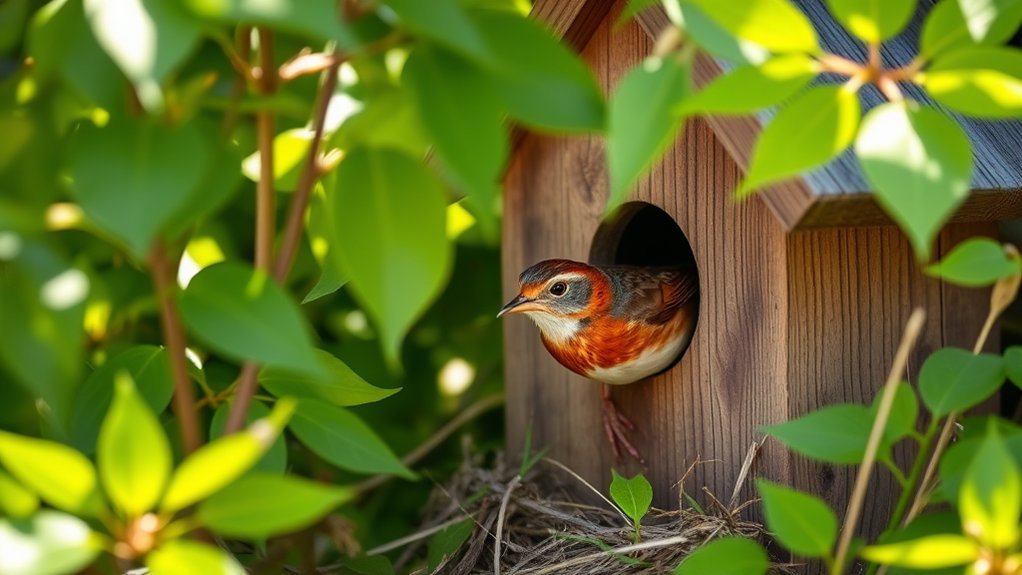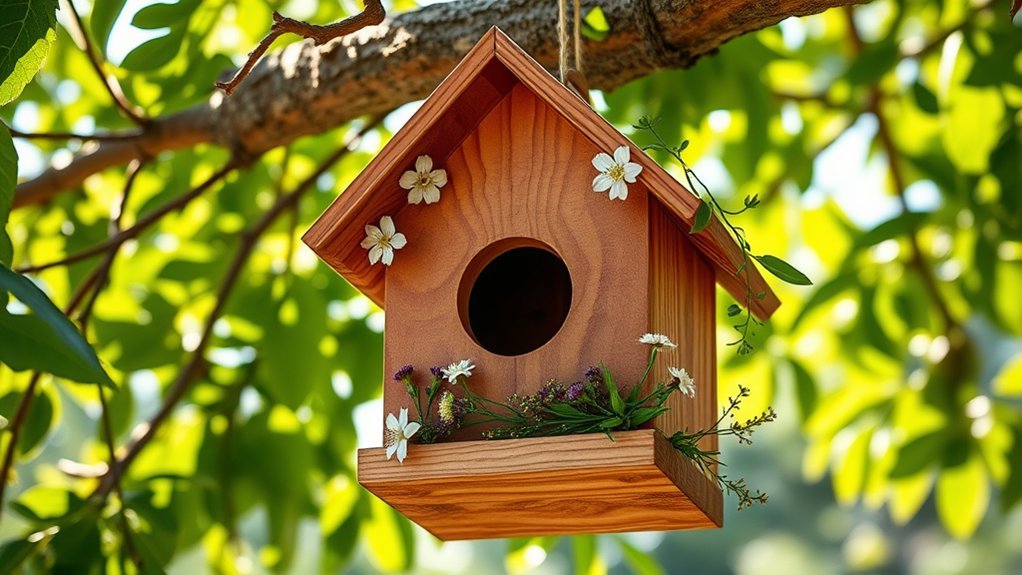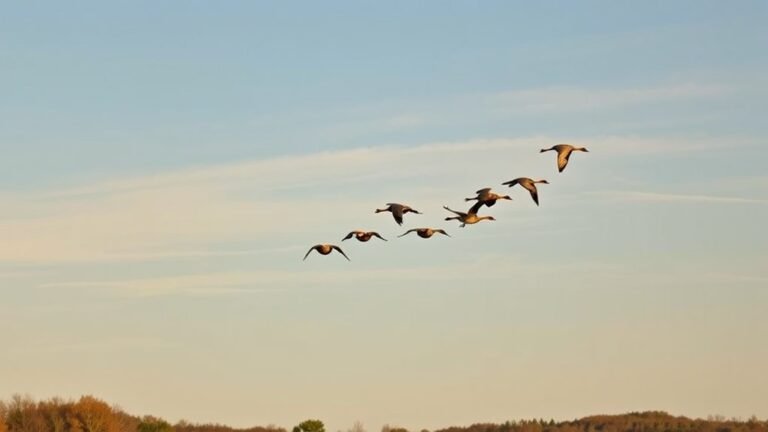Carolina Wren Bird House: Attracting These Melodious Songsters
To attract Carolina Wrens to your backyard, it's important to create a suitable bird house. These small songbirds prefer safe spots near dense plants. To bring them in, consider the location, design, and upkeep of the bird house. Knowing their likes and dislikes will help you succeed. Let's look at what makes a great Carolina Wren bird house and how you can improve your outdoor area.
First, choose a quiet spot with some cover, like shrubs or trees. The bird house should be well-built, with a small entrance hole to keep larger birds away. Use natural materials to blend in with your yard.
Next, keep the bird house clean. Remove old nesting materials each year and check for any damage. This will keep it safe and inviting for the wrens.
Finally, be patient and enjoy watching these delightful songbirds as they explore their new home. With the right approach, your backyard can become a welcoming place for Carolina Wrens.
Key Takeaways
- Place your birdhouse 3 to 10 feet high near thick shrubs for shelter.
- Use strong materials like cedar or pine. Follow the suggested size for comfort.
- Make the entrance hole 1¼ inches high to keep larger predators out while allowing easy entry for birds.
- Add native plants, bird feeders, and water sources in your yard to draw in Carolina Wrens.
- Clean and maintain the birdhouse regularly for a safe nesting space.
These steps can help you attract and support Carolina Wrens in your backyard, creating a lively and joyful environment. Enjoy listening to their beautiful songs!
Understanding the Carolina Wren: Characteristics and Habits

The Carolina Wren is a small, colorful bird known for its lively behavior and unique features. One standout trait is its song. The wren's sweet calls range from cheerful trills to varied patterns, and you can hear them throughout the day.
These birds are often found flitting among low plants.
Carolina Wrens mainly eat insects, seeds, and fruits. They use their long, curved bills to search in crevices and on the ground for food.
Learning about these behaviors helps you understand their role in nature. This knowledge can deepen your connection with fellow birdwatchers who want to attract these charming songbirds.
Choosing the Right Location for Your Bird House
Finding the right spot for your birdhouse can help attract Carolina Wrens. These birds thrive in specific environments, and making them feel secure is important.
Here are some key points to consider when choosing the location:
- Shelter: Place the birdhouse near thick shrubs or plants. This provides cover and reduces the risk from predators.
- Height: Position your birdhouse between 3 to 10 feet off the ground. This height keeps the wrens safe and allows for easy access.
- Sunlight: Select a spot that gets morning sunlight. This warmth helps create a comfortable nesting space for the birds.
By following these guidelines, you can create a welcoming environment for Carolina Wrens.
Happy birdwatching!
Designing an Ideal Carolina Wren Bird House

To build an ideal Carolina Wren birdhouse, focus on important features that meet their needs. Use sturdy materials like cedar or pine for durability and insulation.
The dimensions should be about 6 inches wide, 8 inches deep, and 8-10 inches tall. The entrance hole should measure 1¼ inches and be positioned 6-7 inches from the bottom. This ensures security and easy access for the wrens.
Ensure proper drainage and ventilation for a comfortable interior. A sloped roof will help prevent water from building up and protect the nest.
Enhancing Your Backyard to Attract Carolina Wrens
To attract Carolina Wrens to your backyard, create a friendly environment. Here are some effective steps:
- Plant native plants: Use local shrubs and flowers. These plants provide shelter and supply insects that Carolina Wrens eat.
- Install bird feeders: Place feeders filled with seeds to attract small birds, including Carolina Wrens. Adding suet feeders may also draw them in.
- Create water sources: Add a birdbath or shallow dish of water. Carolina Wrens enjoy bathing and drinking, so a water source will appeal to them.
By following these simple tips, you can enhance your backyard and invite Carolina Wrens to visit.
Enjoy watching these lively birds!
Maintenance Tips for a Successful Bird House Experience

To ensure a successful bird house experience, regular maintenance is important. This helps create a safe and inviting space for Carolina Wrens and other nesting birds.
Set up a cleaning schedule to check and clean the birdhouse at least twice a year, preferably in early spring and after the nesting season ends. Remove old nesting materials to avoid disease and mold.
Check for pests like insects or mites before the nesting season starts. You can use natural repellents to keep unwanted animals away.
Make sure the entrance hole is the right size to keep larger predators out. By committing to maintenance, you'll encourage a thriving birdhouse that attracts Carolina Wrens and adds life to your backyard.
Enjoy watching these delightful birds make your yard their home!
Frequently Asked Questions
Do Carolina Wrens Prefer Specific Types of Nesting Materials?
Carolina wrens prefer specific nesting materials. They favor natural items like grass, leaves, and twigs. The materials you provide can influence their nesting success. To attract these delightful birds, consider offering a variety of nesting materials in your environment. This simple action can help create a welcoming space for them. Enjoy watching these charming birds as they build their nests!
Can I Attract Carolina Wrens With Food Offerings?
You can attract Carolina wrens with food. Use feeders that hold mealworms or suet. Adding insects will also draw these birds to your yard. This simple method can make your outdoor space more enjoyable.
What Other Birds Are Compatible With Carolina Wrens?
If you are looking for birds that get along with Carolina wrens, consider adding chickadees, sparrows, and nuthatches to your backyard. These birds typically coexist well with Carolina wrens. Their presence can bring more life and color to your outdoor space, making it a lively place for birdwatching. Enjoy creating a diverse bird community!
How Long Do Carolina Wrens Typically Stay in a Bird House?
Carolina wrens usually occupy a birdhouse for a few months. They primarily use it for nesting and breeding. Each year, they may return if the conditions are good.
What Time of Year Do Carolina Wrens Mate and Nest?
Carolina wrens start to mate in early spring. They build nests soon after, often having multiple broods during the warm months. Watching this process can help you appreciate the lives of these charming songbirds.

Ava is a bird enthusiast and nature lover who has spent countless hours observing and learning about the fascinating world of birds. With a passion for sharing her knowledge and inspiring others to appreciate the beauty of birds, Ava writes about her experiences and insights on avianadmirer.com.






